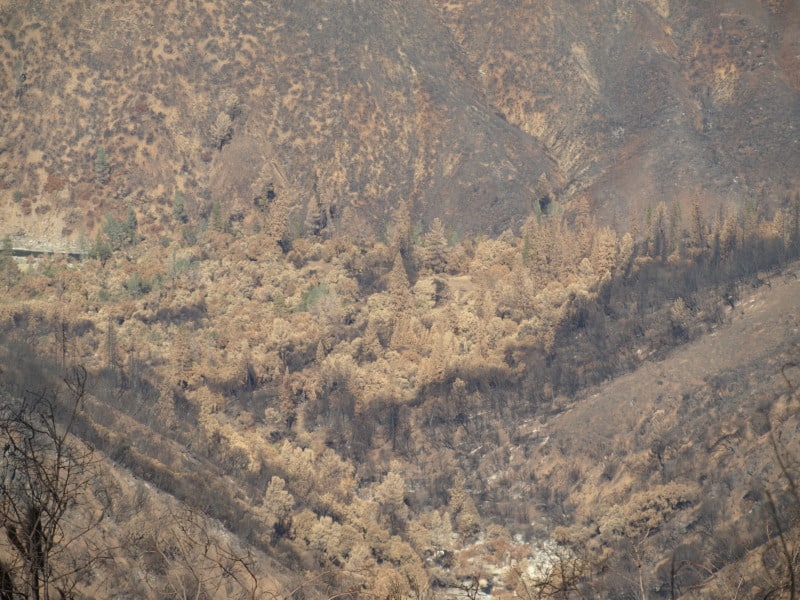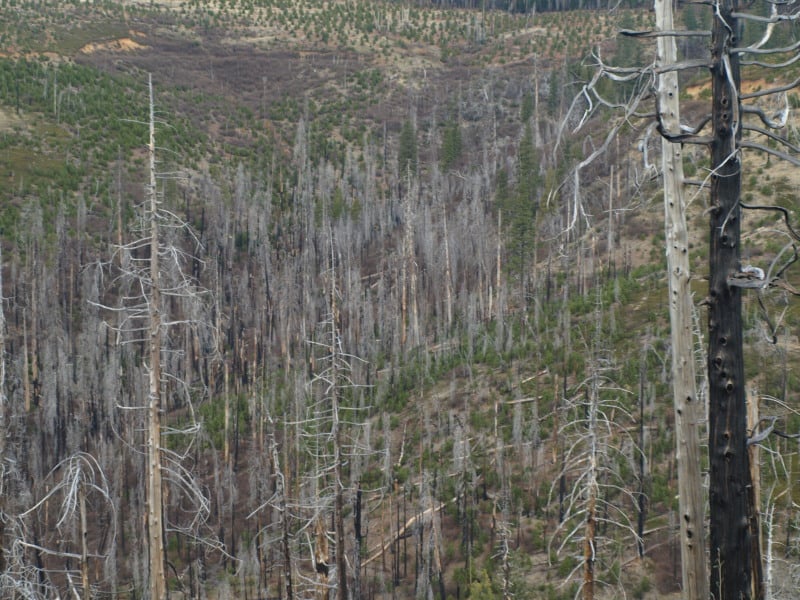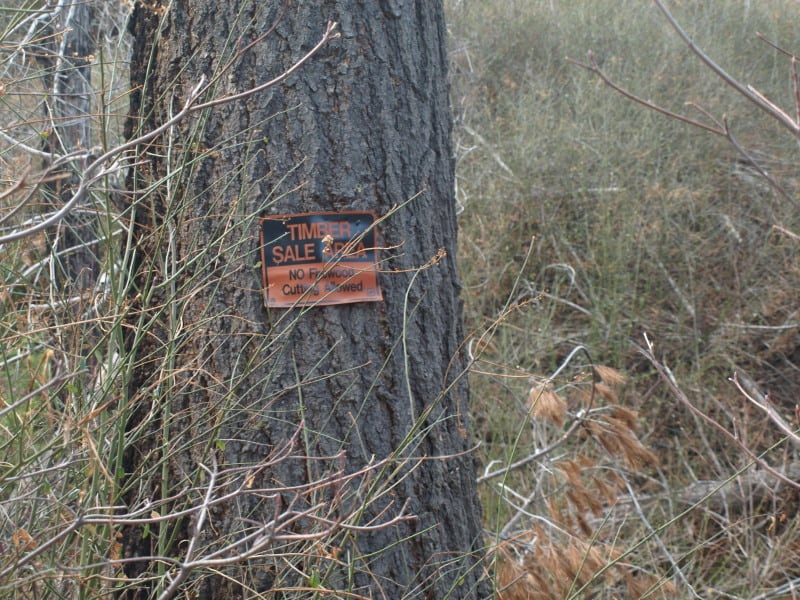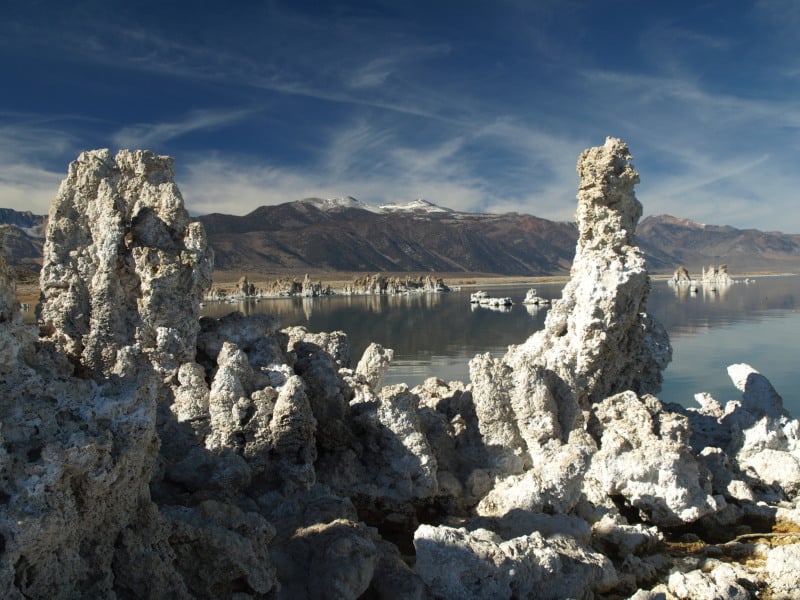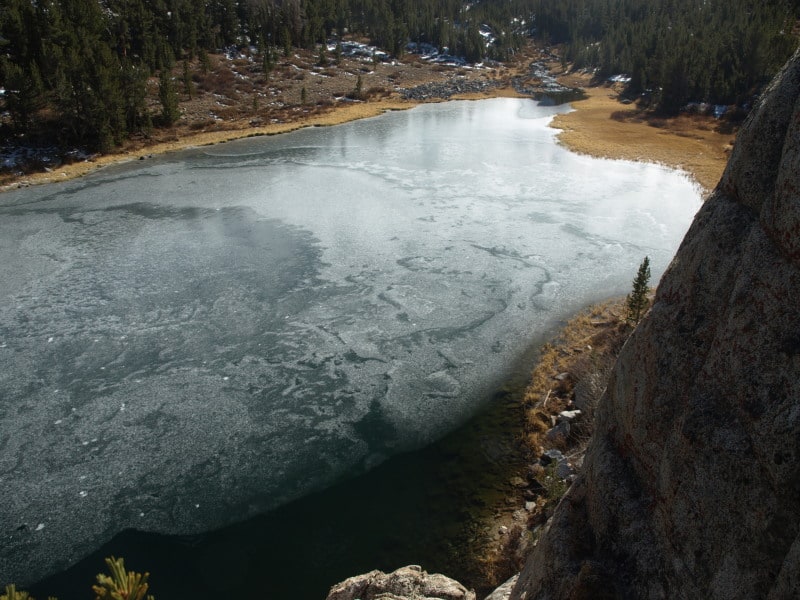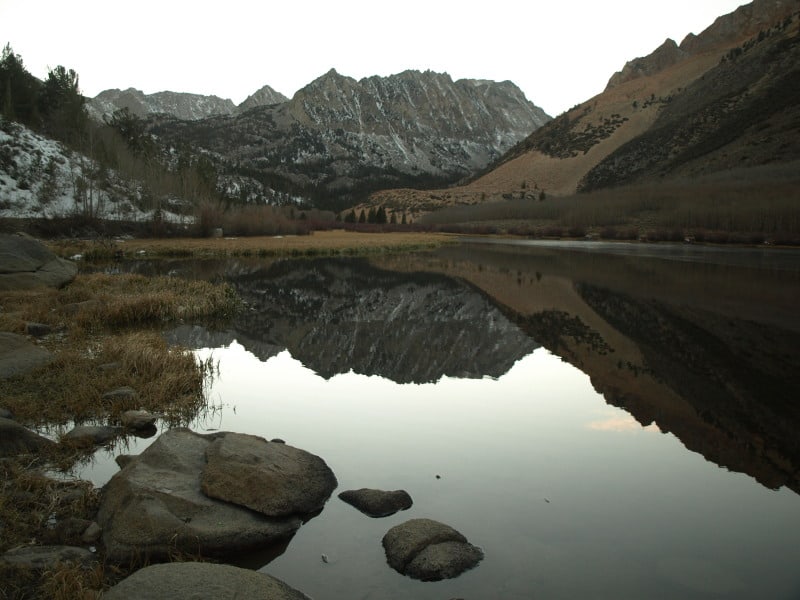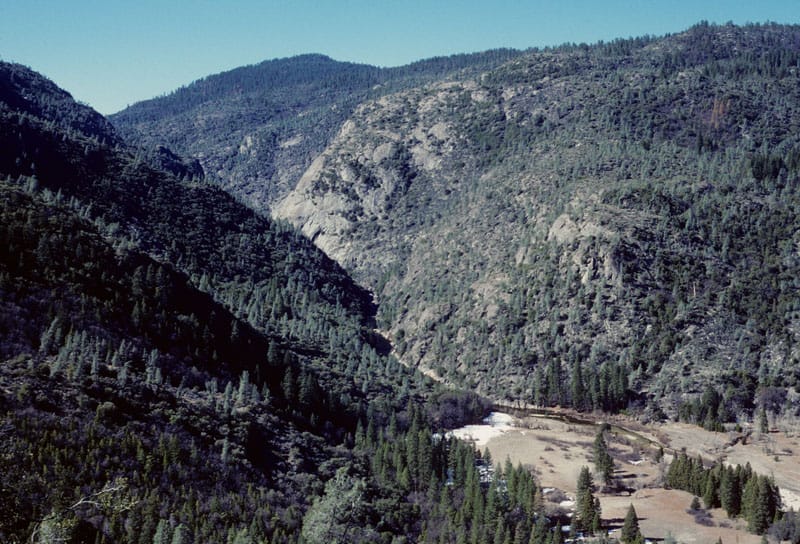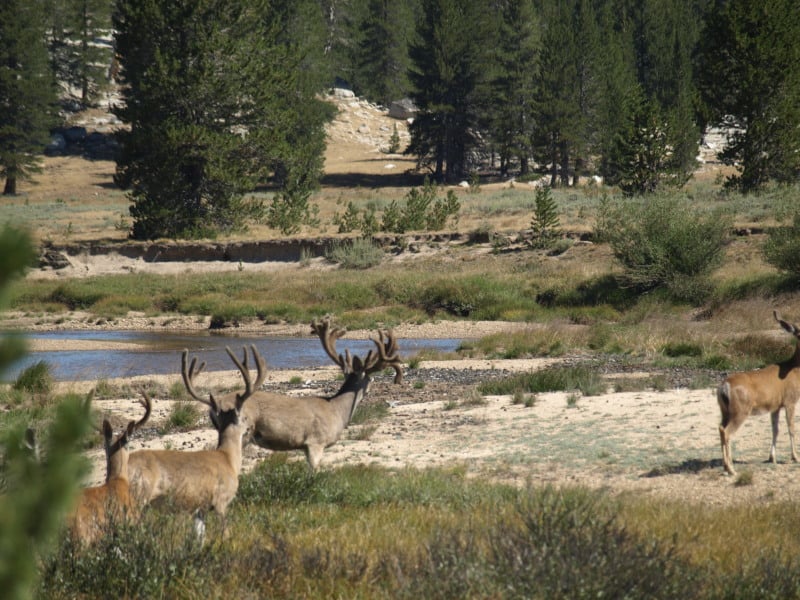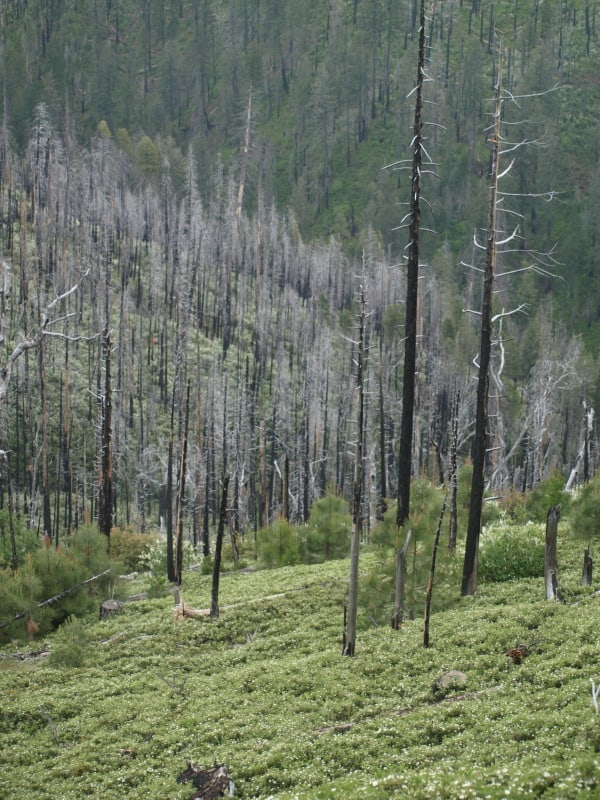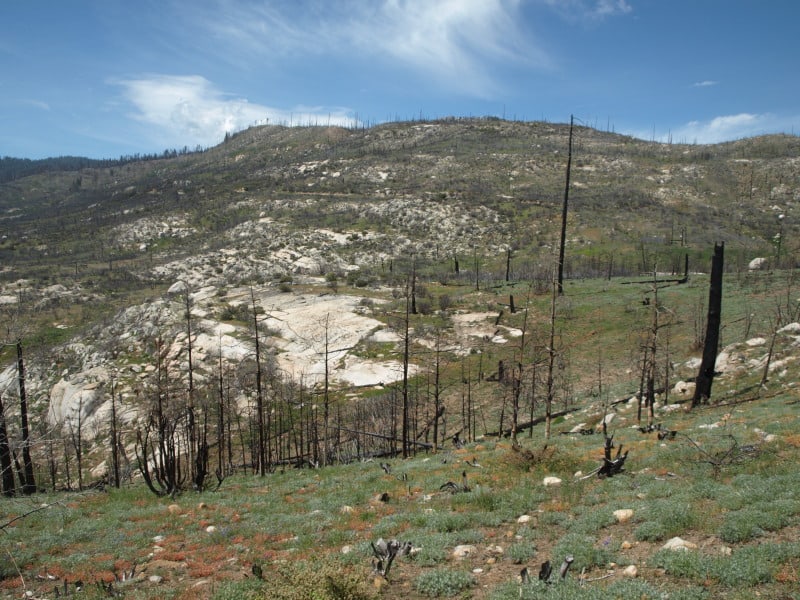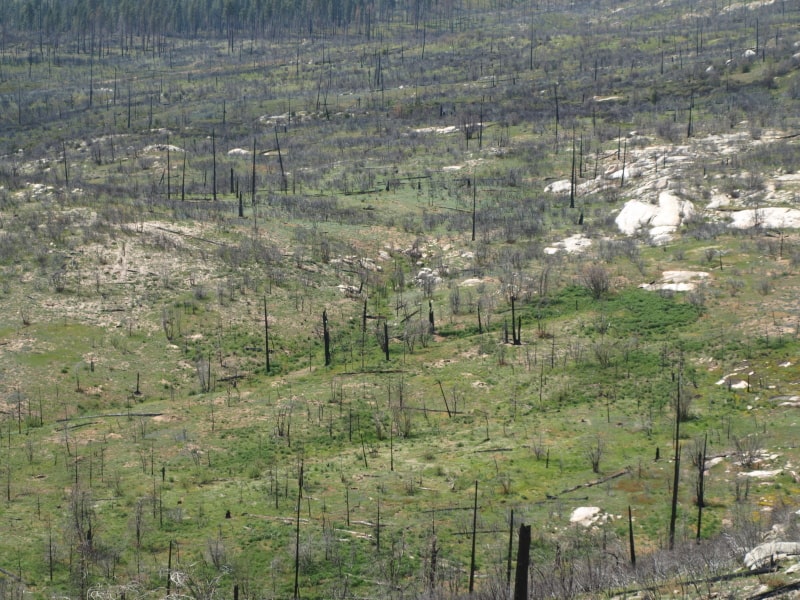With the return of the National Cohesive Wildland Fire Management Strategy, people are talking about it, and maybe some of them shouldn’t. This picture below shows what happens when thick forests, like this one on the Lassen NF, aren’t thinned. I’ll bet there are similar scenes in the Rim fire, where plantations weren’t thinned.
Over here, the comments are full of angst and misdirection. If you think forestry is a lightning rod for controversy, add climate activism and you’ll see all sorts of extreme statements. Luckily, that tide is turning, as people see the post-firestorm results. Here is a typical response, which offers no alternatives.
Logging is a much bigger problem for our emissions than fires. After logging, 85% of the carbon is released to the atmosphere, while after a fire, that ratio is reversed- 85% of the carbon is retained in the soil via charcoal, soil, and surviving flora. This is well documented in the literature- check out work by Harmon of Oregon State or Hansen from UC Davis.
Logging also dries out the soil, and makes for hotter microclimates and stream temperatures.
Obama etc will attack fires instead because they are scared of the timber industry. It’s all about the $, as usual.
Well, many National Forests don’t have much access to lumber mills, and some of those mills are teetering on the brink of solvency. Overstocked stands also dry out soils, increase bark beetle risks and reduce stream flows. We’ve also seen how fire impacts do not stay within the fire’s perimeter, too.
And emissions are not the biggest problem with logging. But you’re right, better the trees die by fire than by logging, in fact much better, most importantly for the forest.
Often times, such wildfire “solutions” put forth by firefighters emphasize “fighting fire with fire”, while ignoring the damages done by Let-Burn fires. They also don’t want to talk about NEPA analysis, preferring their own form of limited “winging it” analysis. Do they survey for endangered species, within their “Maximum Management Areas”, up to 100,000 acres? NOPE! They simply assume “nothing to see here, no need to look, let’s move forward”. If they claim there are no endangered species there, including botanical species, let’s see the survey data. Certainly, the impacts of letting fires burn, uncontrolled, are MUCH more than the modern-day thinning projects, which require meticulous NEPA analysis and courtroom oversight.
I would very much like to see how the Obama Administration is going to increase levels of prescribed fire to actual significant levels. Here are the four main points that are being pushed in the press release.
- Adopting preventive measures, such as fuels thinning and controlled burns;
- Promoting effective municipal, county and state building and zoning codes and ordinances;
- Ensuring that watersheds, transportation and utility corridors are part of future management plans; and
- Determining how organizations can best work together to reduce and manage human-caused ignitions.
It is unclear just how they will accomplish all that, especially Number 1 in that list.

